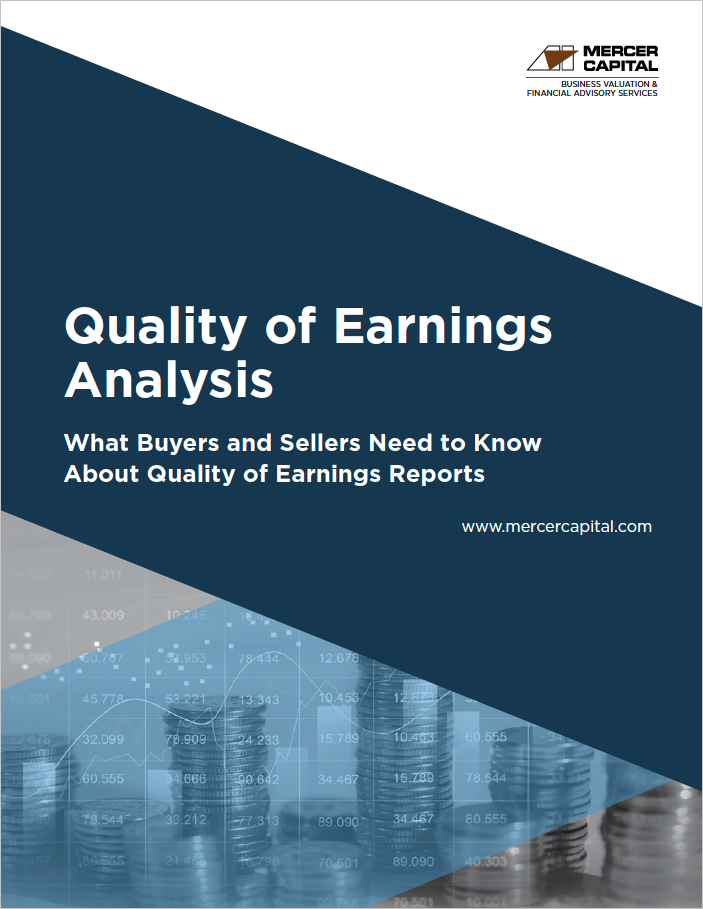5 Reasons Buyers Need a Quality of Earnings Report
After sitting on the sidelines for much of 2022 and 2023, the prospect of Fed rate cuts may lure buyers back onto the field in 2024.
And when deal activity heats back up, due diligence will be as critical to buyers as ever. For many buyers, a quality of earnings (“QofE”) report is a cornerstone of their broader diligence efforts.
For businesses, an acquisition that goes sour can negatively affect family wealth for decades to come. Obtaining a thorough QofE report as part of deal diligence can help business directors avoid such a misstep. In this article, we review five reasons business directors need a QofE report before approving an acquisition.
1. Avoid overpaying for earnings that aren’t sustainable.
Audited financial statements provide assurance that the past performance of the target company is faithfully represented. However, successful acquirers are focused on the future, not the past. A thorough QofE report helps buyers extract what truly sustainable performance is from the welter of the target’s historical earnings. Paying for historical earnings that don’t materialize in the future is a recipe for sinking returns on invested capital. QofE reports analyze historical earnings for adjustments that convert historical earnings to the pro forma run rate earnings that make an acquisition worthwhile.
2. Identify opportunities for cost savings in the target’s expense base.
The detailed analysis of cost of sales and operating expenses in a QofE report can uncover opportunities for acquirers to boost margins at the target through cost-saving initiatives. By observing trends in headcount by function, occupancy, and other components of operating expense, buyers can identify redundancies and develop strategies for enhancing post-acquisition cash flow from the target.
3. Find revenue synergies with your existing business.
A thorough QofE report is not just about expenses. Observing revenue trends by product and business segment, coupled with analysis of customer churn data, can help buyers better understand how the target “fits” with the existing business of the buyer, which can open up strategies for fueling revenue growth in excess of what either company could accomplish on a standalone basis. Armed with a better understanding of opportunities for revenue synergies, buyers can move to the closing table more confident of the upside to be unlocked through the transaction.
4. Clarify working capital needs of the target.
Incremental working capital investment is the silent killer of transaction return on investment. A thorough QofE report will move beyond the income statement to evaluate seasonal trends in the core components of net working capital. Doing so helps buyers plan adequately for the ongoing working capital requirements they will need to fund out of post-acquisition earnings. Working capital analysis in the QofE report also helps buyers negotiate appropriate working capital targets in the final purchase agreement.
5. Assess capital expenditure needs at the target.
Not every dollar of EBITDA is equal. EBITDA multiples are a function of risk, growth, and capital intensity. Buyers cannot afford to overlook capital intensity when evaluating targets. A thorough QofE report examines historical trends in capital expenditures and fixed asset turnover to help buyers better discern the prospective capital expenditure needs of the target and how those needs influence the transaction price and prospective returns.
Conclusion
For businesses contemplating an acquisition, the stakes are high. You can’t eliminate risk from an M&A transaction but obtaining a thorough QofE report on the target can help directors avoid mistakes and increase the odds of a successful deal. If you are considering an acquisition, give one of our senior professionals a call to discuss how our QofE team can generate Insights That Matter for your diligence team.
WHITEPAPER
Quality of Earnings Analysis
For buyers and sellers, the stakes in a transaction are high. A QofE report is an essential step in getting the transaction right.




